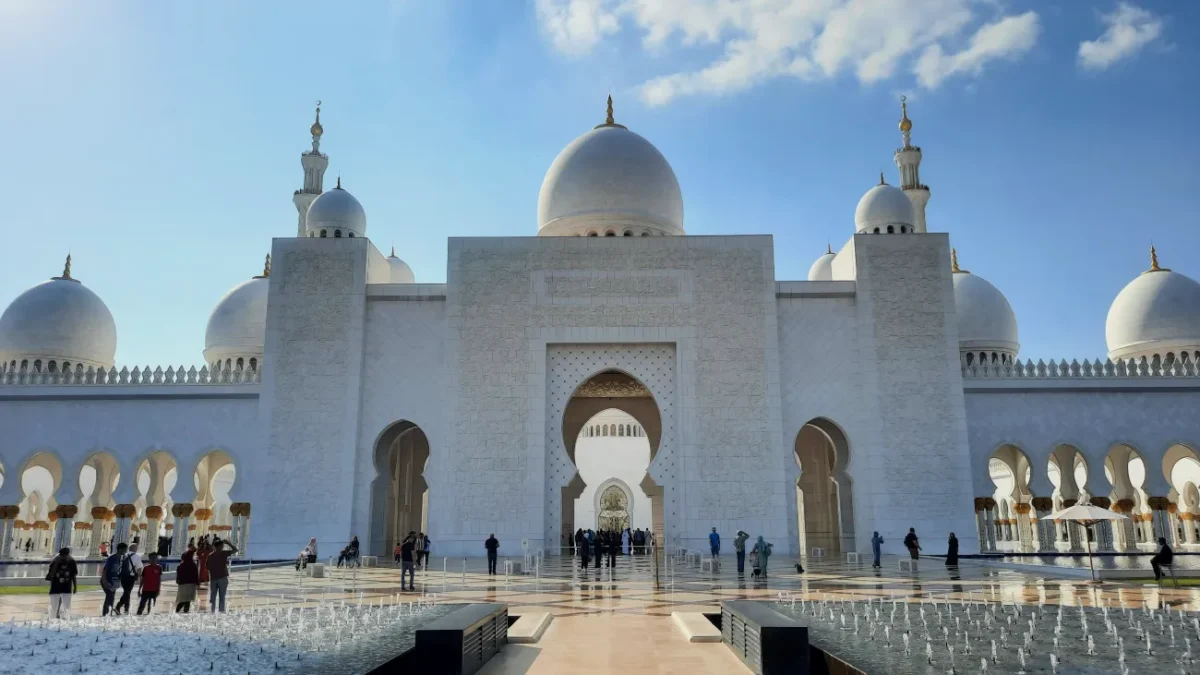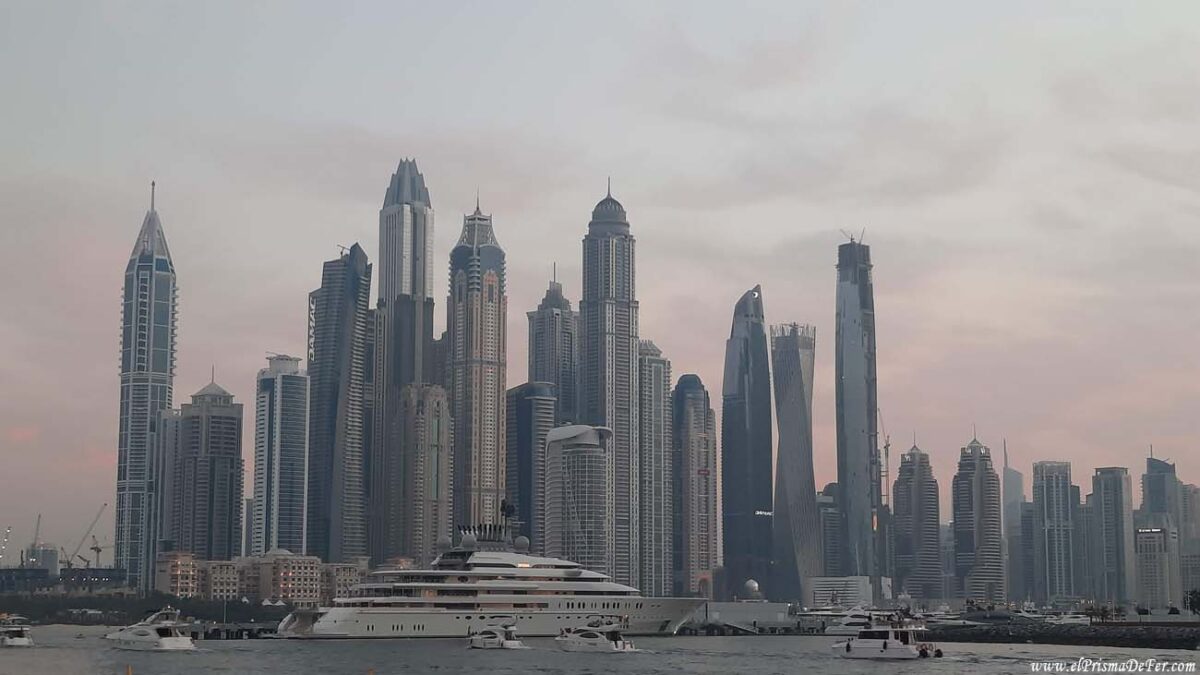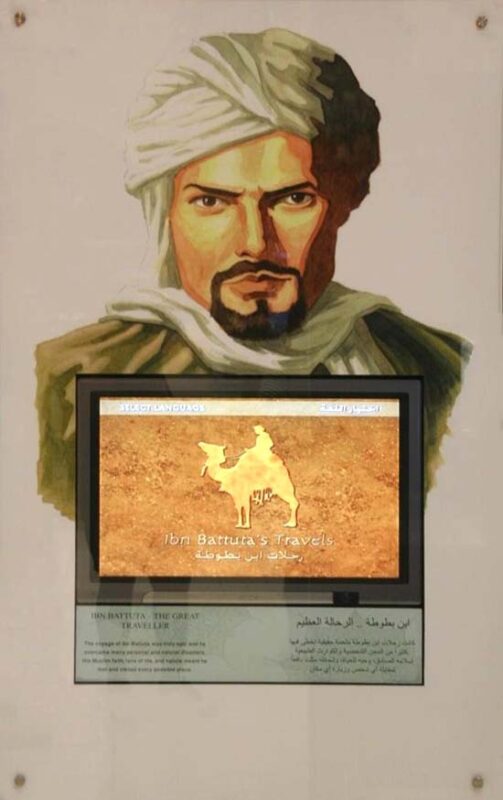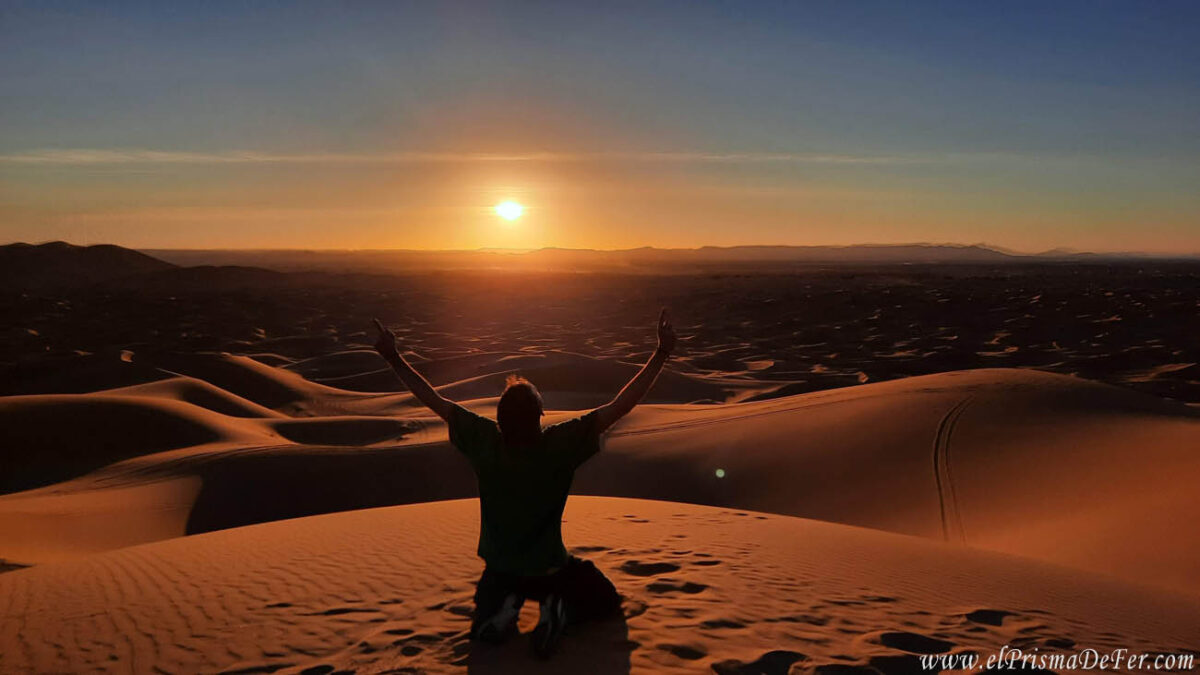Dubai was always one of those destinations that intrigued me. Not only because of the Burj Khalifa, the tallest building in the world, but also because of that unique blend of desert, luxury, and extreme modernity that you see in documentaries or travel shows. It was hard to imagine living in a city that seems like something out of the future, built with pure ambition in the middle of nowhere.
I had many questions before going: Will it be as artificial as they say? What is daily life like in such an eccentric place? Traveling to Dubai was an experience of contrasts, and in this post, I'll tell you what to see, what to do, and what to avoid so you can form your own impression of this destination that leaves no one indifferent.
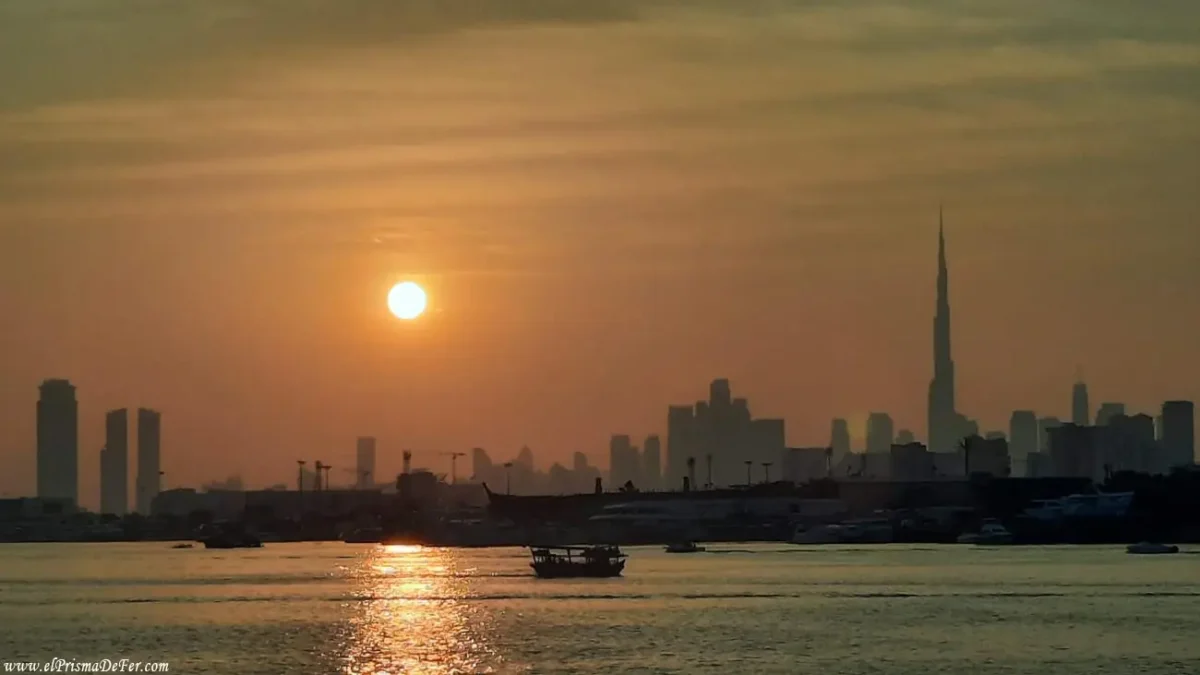

Table of Contents
First nights in Dubai: sleeping in the “budget capsule hotels”
Since I usually travel on a backpacker's budget, when I arrived in Dubai I decided to save on accommodation and was tempted by the capsule hotel options on Booking.com. I thought they would be similar to the famous Japanese capsule hotels: modern, practical, clean, even with a certain futuristic touch. But that wasn't exactly the case…
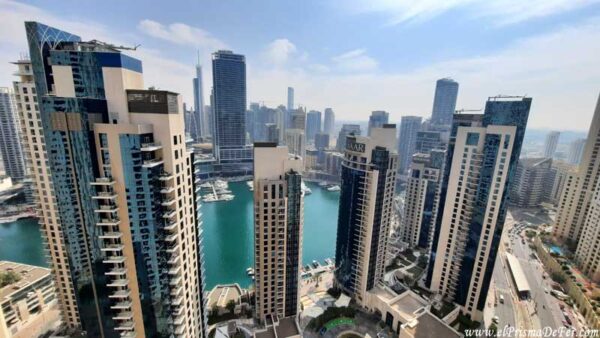
You might be interested in reading my post on how to travel cheaply in the United Arab Emirates, with tips on where to eat, how to get around, and how to stay affordably.
The reality was different. I found myself in small rooms, packed with cubicles side by side, with very little room to move around, let alone store my backpack or luggage. The feeling was more one of confinement than comfort.
The worst thing wasn't just the size, but the atmosphere: most of the guests were migrant workers who left early to work all day and returned in the evening. It wasn't designed for tourism, but rather for affordable long-stay accommodation.
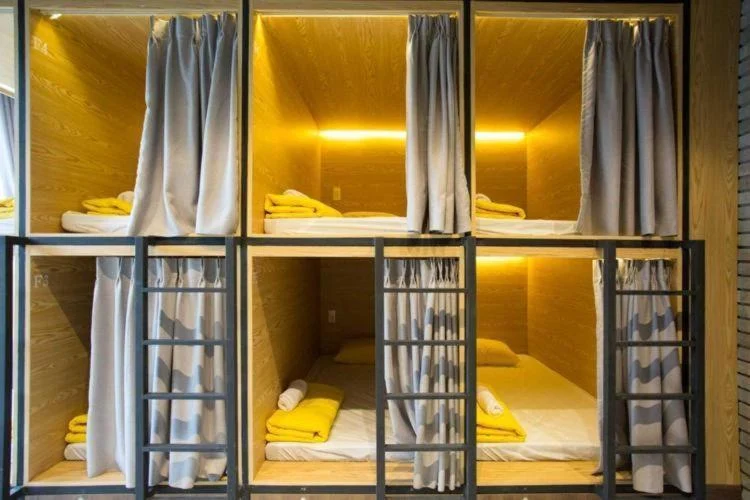
The restrooms were always crowded, with a constant turnover of people. The buildings were old, poorly maintained, and located in somewhat run-down areas, far from the glitter of the Burj Khalifa or the Marina.
It was close to the Al Ghubaiba bus station, in a part of Dubai that I wouldn't recommend if you're traveling for tourism.
Not very comfortable the first few days
All of this context greatly influenced my first impression of the city. Honestly, my first impressions weren't good.
That combination of uncomfortable accommodations, stuffy atmosphere, and an unappealing area made even the nearby attractions I visited, such as the Frame or the tour of the traditional historic village, seem unappealing to me; everything seemed staged for photo ops rather than to tell a real story.
I had a hard time connecting with Dubai; it didn't convey anything authentic to me, and I came to think that this destination was way overrated.
I endured three nights in those accommodations until I said enough... I needed a change of scenery. I went to the other side of the city, to the Dubai Marina area, near JBR beach.
The change was dramatic. More air, more light, more space, and a different, much more pleasant atmosphere for enjoying the city.
Rediscovering Dubai from the Marina
After those first difficult days, I decided to change my surroundings and move to the Dubai Marina area. I stayed there for about 10 days, staying in shared hostel-style apartments to maintain my backpacking budget.
Although the accommodation was a little more expensive than in the old town, the change was worth every dirham: Marina was, along with the Burj Khalifa area, the part of Dubai I liked the most.
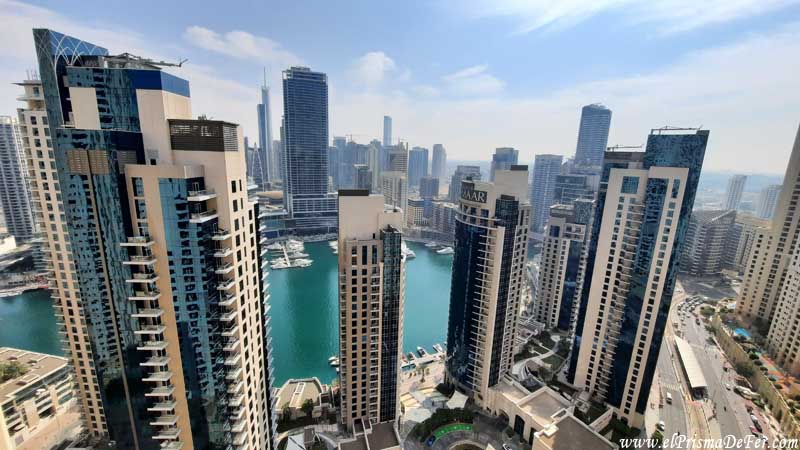
It was like being in a different city. Everything that had previously overwhelmed or repulsed me was transformed into a completely different experience.
The modern buildings, clean spaces, striking architectural design, and relaxed atmosphere made me reconnect with the idea of enjoying Dubai.
Walking along the Marina was a pleasure. The waterfront is quiet, with tourists strolling (many Russians), cafes overlooking the canal, and direct access to JBR Beach, which is perfect for relaxing or watching the sunset.
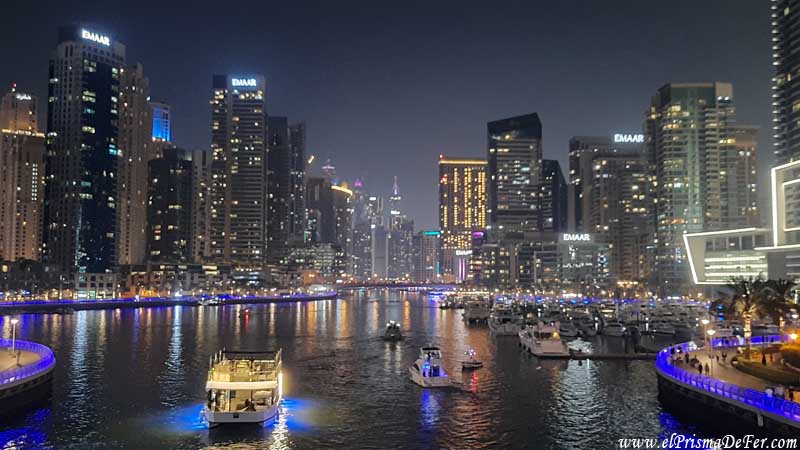
That new base allowed me to see the city through different eyes. From there, moving to other areas like Downtown was much more comfortable, and with a different frame of mind, everything feels different.
Dubai intrigued me again, but this time on the positive side.

👀 Impressions of Dubai
I was struck by how spread out and vast Dubai is. Everything is big, new, but remote. It's a city not designed for walking.
I love exploring cities on foot, getting lost in narrow streets, feeling the local rhythm... but in Dubai that's almost impossible, I found it quite frustrating.
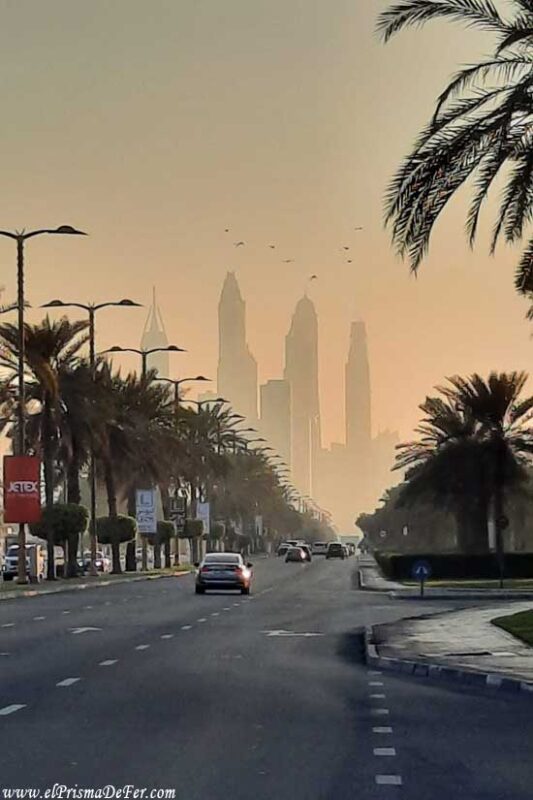
I tried walking several times, but I ended up following endless highways, with lots of car noise, smog, and little vegetation, without seeing anything interesting along the way.
To cross from one sidewalk to the other, you had to walk several more minutes until you found a pedestrian bridge. Distances can be deceiving, Google Maps can be deceiving, so don't trust it.
What seems close by turns out to be miles of boring highway. The environment isn't designed for pedestrians, and the city is experienced more from the car than from the street.
There's no life on the sidewalks, because literally no one walks . Everyone gets around by car or subway. Instead of plazas or vibrant neighborhoods, there are huge malls and luxurious high-end car dealerships. There, you do see Emirati families strolling, in air-conditioned rooms, far from the outside world.
🌍 The streets of Dubai do not belong to the Emiratis, but to the immigrants
When you reach the commercial or tourist areas, you'll see the people who live and work in the city. Dubai's true soul isn't in its towers or its luxury showcases, but in the immigrants who inhabit it.
Daily life in Dubai, the one you see if you step away from the shopping malls or extravagant attractions (that's where the Emiratis are), is sustained by millions of immigrants , mostly from the Indian subcontinent (India, Pakistan, Bangladesh, Nepal) and Middle Eastern countries . They are the ones who run the shops, cook in the food stalls, drive the taxis, clean the hotels, and build the buildings.
Even the local cuisine is heavily influenced by these countries. It's much easier to find an Indian chai, a biryani, or a Lebanese shawarma than a traditional Emirati meal (which, frankly, is largely absent from tourists' daily lives).
This reality isn't usually found on official postcards of Dubai, but it's everywhere, if you know how to look. And it's an essential part of understanding what kind of city it really is: a city of foreign workers, of vast social contrasts, and of wealth that isn't evenly distributed.
🙄 An image: the cult of the leader
Something that caught my attention during my stay in Dubai was the constant presence of the emir 's image on murals, billboards, and posters throughout the city. He appears with solemn gestures, sometimes in epic poses, and always with messages that present him almost as a savior or divine figure.
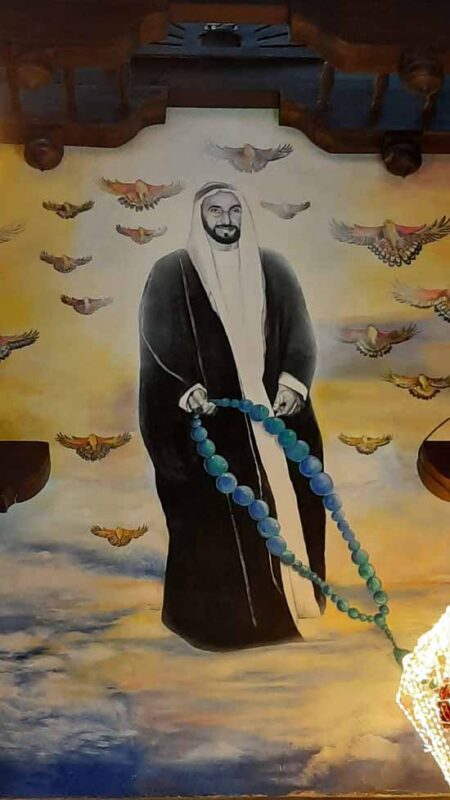
I found it a bit shocking, especially coming from cultures where the political figure is more questioned or at least viewed from a more earthly place.
Here it seemed more like a cult of personality, and it left me with a strange feeling, as if they were trying to project an image of perfection and absolute power.
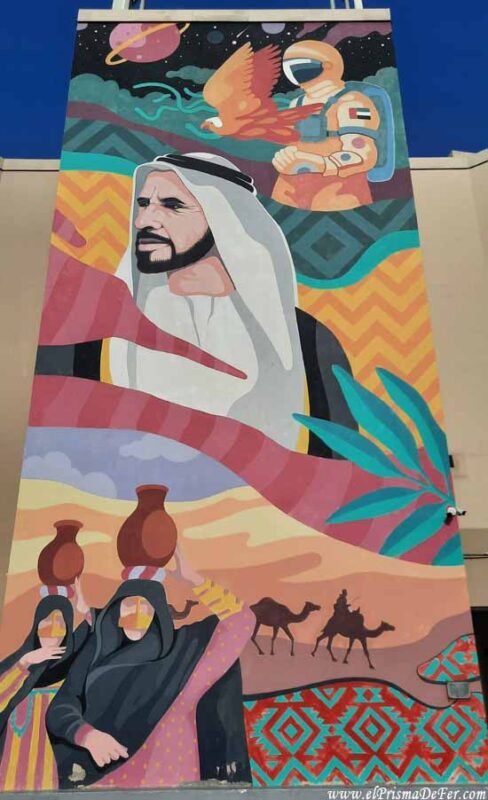

How to get from the airport to different areas of Dubai
Dubai International Airport (DXB) is located relatively close to the city center, but due to the size and spread of the city, transfer time and cost can vary greatly depending on the area where you are staying.
Here's a summary of the main options for getting from the airport to the most touristy neighborhoods using the Metro:
- To Downtown (Burj Khalifa / Dubai Mall): Red line from Terminal 1 or 3. Get off at Burj Khalifa / Dubai Mall station. It takes approximately 25-30 minutes.
- To Dubai Marina / JBR: Red line to DMCC or Dubai Marina station, but it takes over an hour (requires patience and is often crowded if you have luggage).
- To Deira / Bur Dubai (Old Town): Very easy to access, these are the closest stations to the airport (Deira City Centre or BurJuman). You'll be there in 10-15 minutes.
- To Palm Jumeirah: Metro + monorail (recommended if you travel light): Red line to Al Khail or Dubai Internet City, and from there take a taxi or take the monorail to reach the bottom of the palm tree.
Other considerations:
- Subway stations only operate from approximately 5:00 AM to midnight, with later runs on Fridays.
- All airport taxis use meters and accept card payments.
- Uber and Careem (the local app) are also available, although they may be a bit more expensive than regular taxis.
- From Terminal 2, metro connections are not as direct, so it is usually better to use a taxi or a private transfer if you have a lot of luggage.
✈️ Beware of the departure terminal at Dubai Airport!
A key recommendation if you are taking a flight from Dubai International Airport (DXB): check carefully which terminal your flight departs from.
It seems obvious, but don't be fooled. Terminals 1 and 3 are on the same side of the airport, connected to each other, but Terminal 2 is at the other end, physically separated from the rest, and cannot be accessed directly from the other terminals!
It happened to me: I went to Terminal 1 thinking my flight was leaving from there, but it was actually from Terminal 2. When I realized it, I was already inside and there was no way to connect internally.
I had to leave the airport, get a taxi, and cross the entire complex to get to the other terminal. You can also do it by combining metro + taxi or metro + bus, but it takes time and can be stressful if you're against the clock.
Luckily, I arrived just in time, but it was a race against time, which I don't recommend. So, before you leave for the airport, check your ticket or the airline's website to see which terminal your flight departs from. It could save you a lot of trouble.
How to get to Dubai from Abu Dhabi
Traveling from Abu Dhabi to Dubai is quite easy, as both cities are very well connected. The distance is approximately 140 km, and there are two ways to travel:
🚌 By bus (cheap and direct option)
The cheapest and easiest way is to take one of the intercity buses operated by RTA (Roads and Transport Authority), which depart every 20-30 minutes and take between 1:30 and 2:00 hours, depending on traffic.
- Line E100: Departs from Abu Dhabi Central Bus Station and arrives at Al Ghubaiba Bus Station in Dubai (Bur Dubai area).
- Line E101: Departs from the Abu Dhabi Bus Station towards the Ibn Battuta Metro Station (ideal if you are staying near Marina or JBR).
🚖 By car or taxi (fast and convenient option)
If you prefer greater comfort or are traveling with luggage or in a group.
How to get around Dubai
Dubai is huge, modern, and somewhat spread out. It's not a city designed for walking, so it's a good idea to plan your travel plans and choose your accommodation area carefully.
First of all, you should know that you'll need a Nol Card to use public transportation. This only works in Dubai and NOT in the other emirates. You can get it at metro stations, bus terminals, and authorized supermarkets. It costs approximately AED 25 .
Transportation in Dubai: Options and Recommendations
🚇 Metro in Dubái
It's the most economical, efficient, and easy way to travel between tourist areas. It works very well and connects key locations like the airport, Burj Khalifa, Dubai Marina, and the Mall of the Emirates.
- Cost: From 3 AED each way (~0.80 USD)
- Hours: 5:00 to 00:00 (Fridays until 1:00)
🚕 Taxis and Uber / Careem
They're plentiful, safe, and not as expensive as other cities. Ideal if you're going somewhere not connected by metro or leaving late. Careem (the local Uber-like app) is usually cheaper than Uber.
🚍 Buses and Trams
They exist, but they're not very intuitive for tourists. They're only convenient if you're staying in Marina and using the tram to get to the metro.
🚶 Walking… not so much
Long distances, highway interchanges, and extreme heat. Dubai isn't ideal for walking between areas (although places like the Marina or Downtown are walkable).
🚗 Rent a car
I don't recommend it unless you're traveling to Abu Dhabi or the desert.

🤔 Did you know…? Crazy facts about Dubai
Dubai not only impresses with its futuristic architecture and extreme luxury, it's also full of details that make you wonder, "Is this real?" Here are some gems I discovered during my trip:
- …the tallest building in the world is here? The Burj Khalifa is 828 meters tall… it's so tall that from the top you see the sunset a few minutes later than at the base!
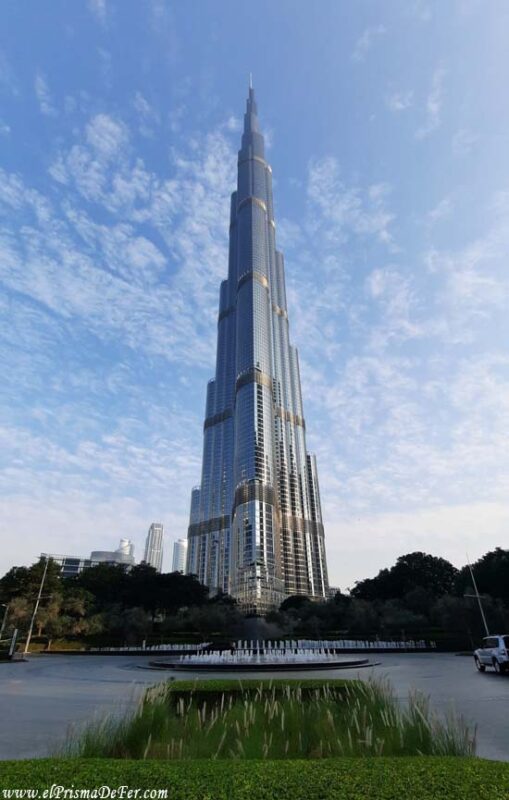
- …the majority of people living in Dubai aren't Emirati? 85-90% of the population are foreigners, many of whom come to work. The locals are a minority, but they hold the majority of the economic power.
- …the police patrol in Lamborghinis and Bugattis? I'm not kidding. Some police cars look like they're straight out of a racing video game.
- …does the most famous shopping mall have an ice rink and a shark aquarium? Yes, the Dubai Mall is a city in itself.
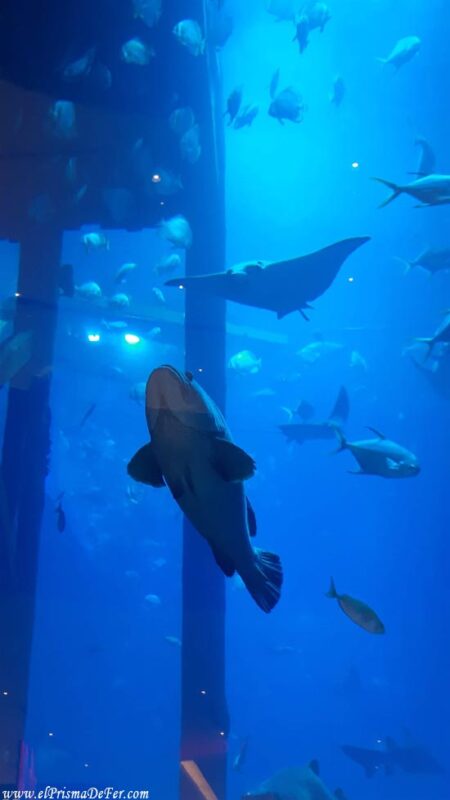
- …can you ski in the middle of the desert? At Ski Dubai, inside the Mall of the Emirates, there's artificial snow, penguins, and everything.
- …is the weekend in Dubai Friday and Saturday? So if you're planning something, keep that in mind, because Sunday is a working day.
Map of the main places to see and visit in Dubai
What to do in Dubai: Must-see attractions and unique experiences
Dubai is a city that impresses with its blend of modern luxury and Arabian traditions. From towering skyscrapers to seemingly historic souks, there's plenty to discover. Here's a list of the best things to do in Dubai:
Walking Tour
Taking a free walking tour in Dubai is the best way to start getting to know the city. While it's not free, as it works based on tips, it helps you get your bearings quickly, you learn history and anecdotes from a local guide and, in the process, you get to meet other travelers. You can book your free walking tour here.
🌆 Enjoy Dubai Marina and JBR Beach
Dubai Marina was one of the areas I liked most in the city. It's modern, clean, and designed for both residents and tourists. Here, you'll find a relaxed yet elegant atmosphere, with skyscrapers, man-made canals, and a pedestrian promenade that runs along the entire marina.
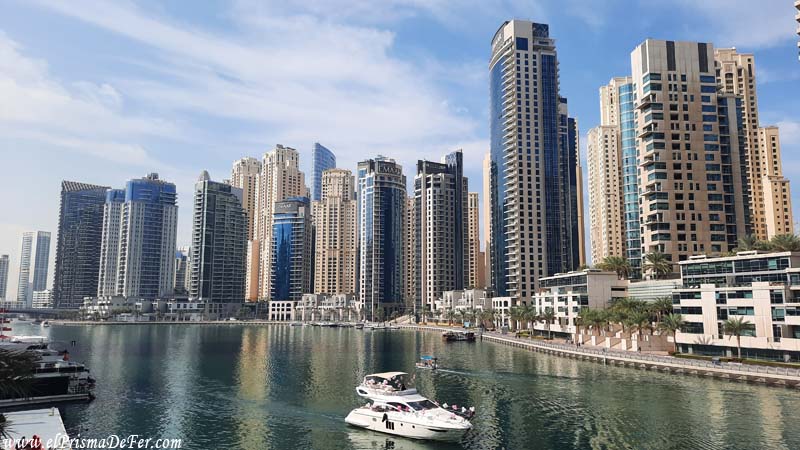
You can walk along The Walk , a coastal avenue lined with cafes, restaurants, and shops, perfect for dining out or just strolling. It's also a great place to take photos, especially at sunset when the buildings turn orange.
Just steps away is JBR Beach (Jumeirah Beach Residence) , one of Dubai's most popular public beaches. It has white sand, calm, clean waters , and features showers, restrooms, exercise areas, and even a seasonal food truck fair. Plus, the famous Ain Dubai Ferris wheel , a visual icon, is visible from the beach.
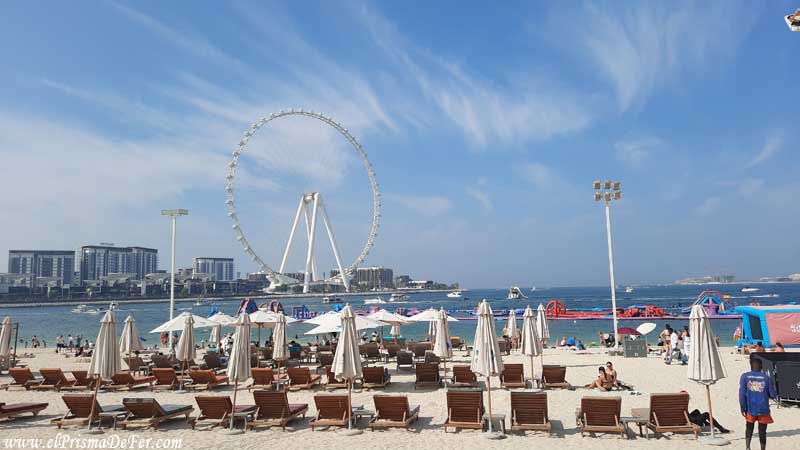
If you want a little more action, you can take boat rides, rent kayaks, or simply sit on the sand watching the yachts sail by from the pier.
🏙️ The Burj Khalifa and its surroundings: a visual magnet
The other area I really loved in Dubai was the one surrounding the Burj Khalifa. It's a modern, perfectly maintained area, with fountains, walkways, and man-made canals that give it a sophisticated and much more human feel than other parts of the city.
Despite the somewhat luxurious and polished atmosphere, I felt comfortable walking around it, especially at dusk or at night, when the lighting completely changes the atmosphere.
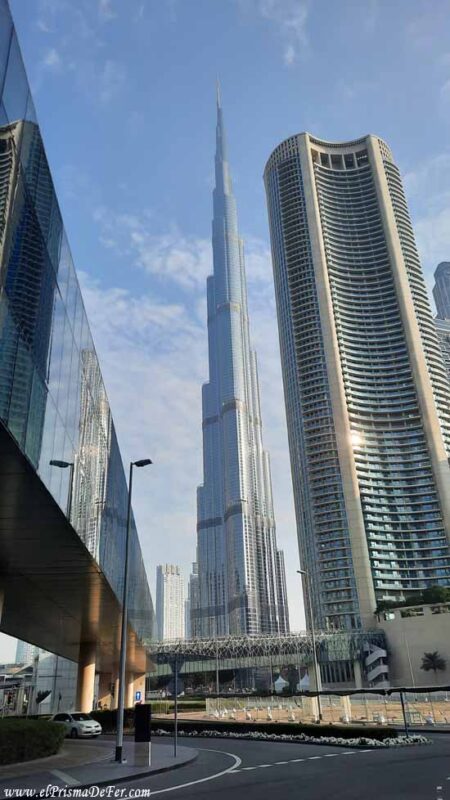
But what caught my attention the most was the Burj Khalifa itself. That enormous mass of steel and glass became a kind of magnet for me.
I loved walking around the area looking for different angles to photograph it or just observe it. I watched it day, night, up close, from a distance... I couldn't stop staring, as if it always offered a new face.
His presence is so dominant and elegant that he inevitably ends up being the protagonist, even when you don't want him to be.
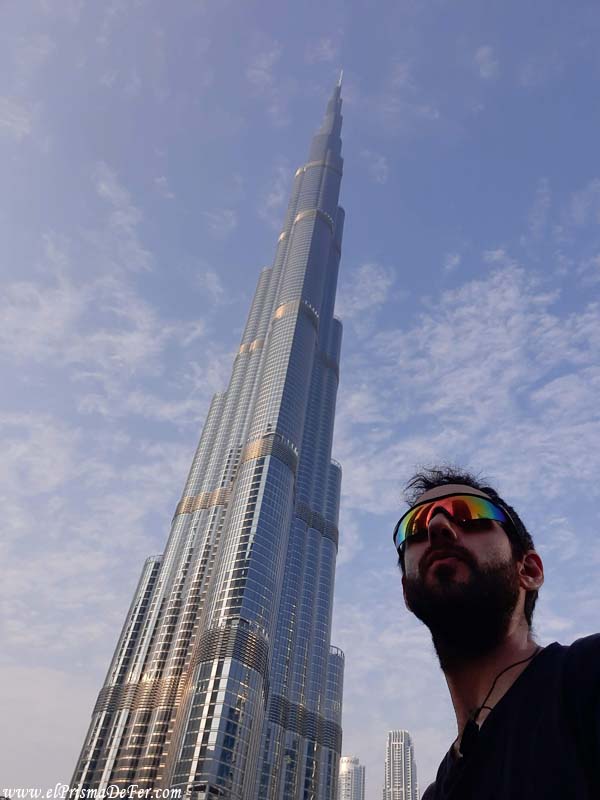
Exploring its surroundings, seeing how it's reflected in the canals or how it stands out against the sky with the night lights was one of the most memorable experiences of the trip.
In a city that can sometimes feel artificial or empty, this place gave me that feeling of being connected to something worth seeing and experiencing.
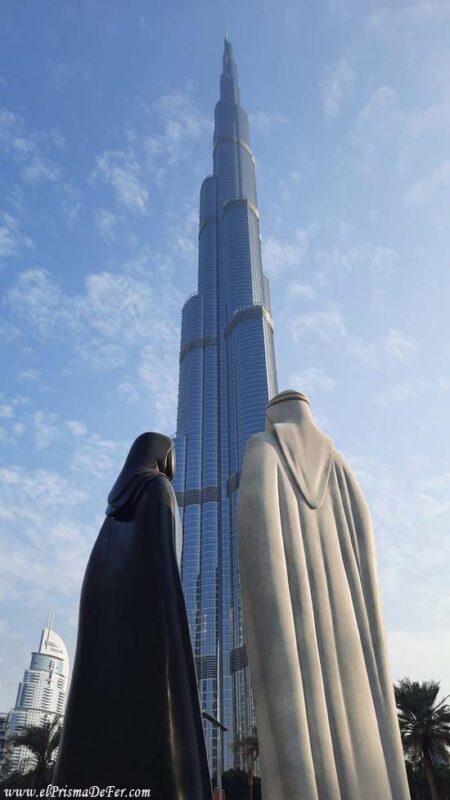
🏙️ Go up the Burj Khalifa
The tallest building in the world (828 meters) offers breathtaking panoramic views from its observation decks on the 124th, 125th, and 148th floors. It's best to visit at sunset, when the skyline turns gold.
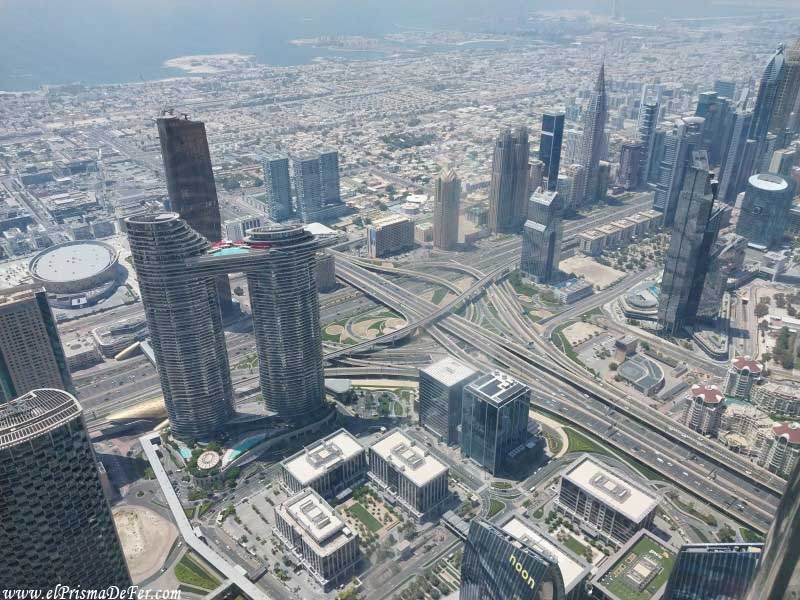
- Entry from: 169 AED (~46 USD)
- Official site: https://www.burjkhalifa.ae
Video of the Burj Khalifa from differents angles
💦 Watch the Dubai Fountain Show
Right at the foot of the Burj Khalifa and next to the Dubai Mall, a free dancing fountain show with music and lights takes place every afternoon and evening. It's the perfect complement to a visit to the center. Each show lasts approximately five minutes and combines water, lights, and music in a stunning choreography.
- Daytime shows: De lunes a jueves: 13:00 y 13:30 horas. Viernes: 13:30 y 14:00 horas.
- Night shows: Todos los días, desde las 18:00 hasta las 23:00 horas, con presentaciones cada 30 minutos.
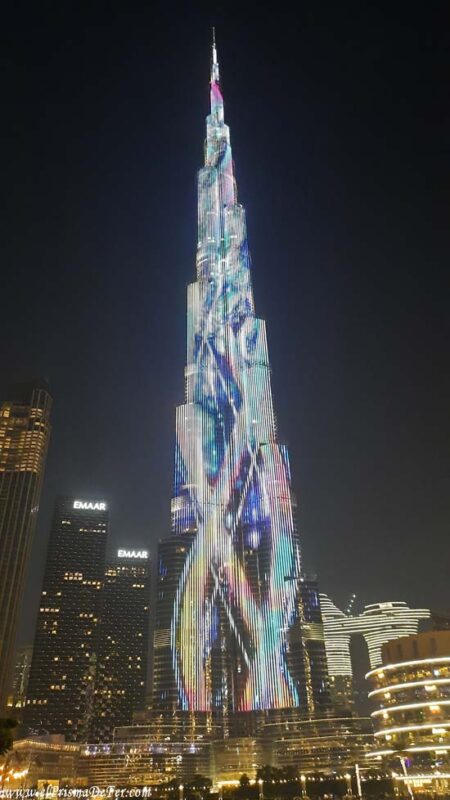
🛍️Tour the Dubai Mall and its attractions
One of the largest and most visited shopping centers in the world. Beyond being a gigantic shopping mall, the Dubai Mall has several tourist attractions inside, many of which are free and others require a fee.
Main attractions inside the Dubai Mall
- Dubai Aquarium & Underwater Zoo: One of the world's largest suspended aquariums, it's free to visit from the mall, although the full tour requires a fee. Admission: from AED 179 (~USD 49)
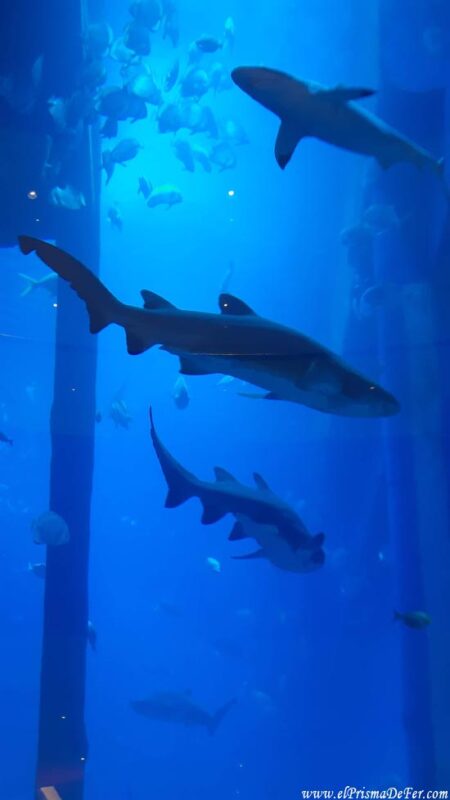
- Dubai Ice Rink: Ice skating rink right in the middle of the mall. Great for families or just to try something different in the desert heat. Starts at AED 110 (~30 USD).
- VR Park (Virtual Reality): Virtual reality park with interactive experiences, simulators, and games. Free entry, pay-per-play (from AED 15 each)
- Art Gallery and Waterfalls: In the mall's hallways, there's a very photogenic art installation with waterfalls and sculptures of divers. Admission is free.
- Dinosaurs Exhibit (Dubai Dino): A real diplodocus dinosaur skeleton over 155 million years old. Admission is free.
🏖️ Relax on public beaches
The public beaches of JBR Beach in Dubai Marina and Kite Beach, near the Burj Al Arab, are perfect for relaxing or enjoying water activities. They are free and well-equipped.
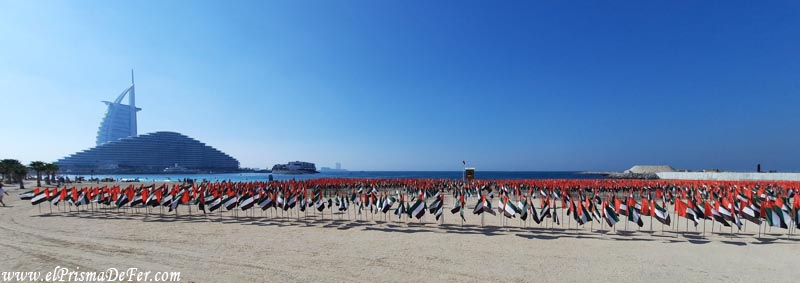
🏰 See the Burj Al Arab (from outside or with a reservation)
This sail-shaped Dubai icon can only be visited if you have a reservation at its restaurant or bar, but it can be admired from the beach or from the Souk Madinat Jumeirah.
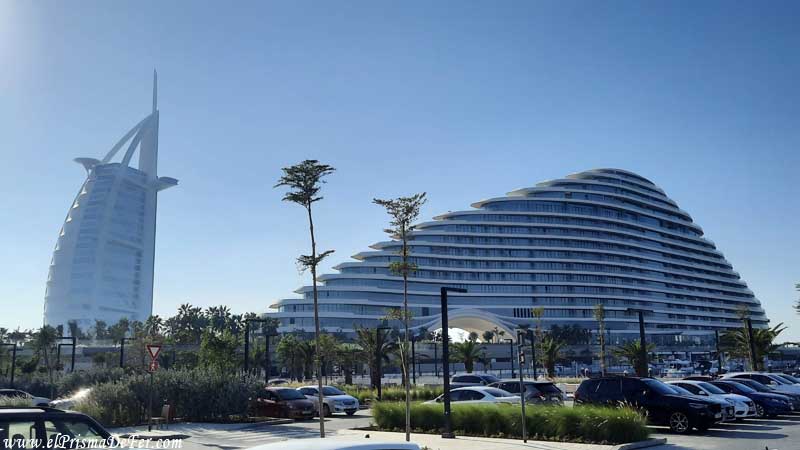
🛍️ Souk Madinat Jumeirah: a luxury bazaar with a cardboard soul
The Souk Madinat Jumeirah is one of those places that, at first glance, seems to transport you to another era: stone alleys, hanging lanterns, Venetian-style canals and views of the Burj Al Arab.
However, behind that visual charm, everything seems too artificial. The place is carefully designed to look like a traditional Arab souk… but it's nothing more than a modern model designed for tourism.
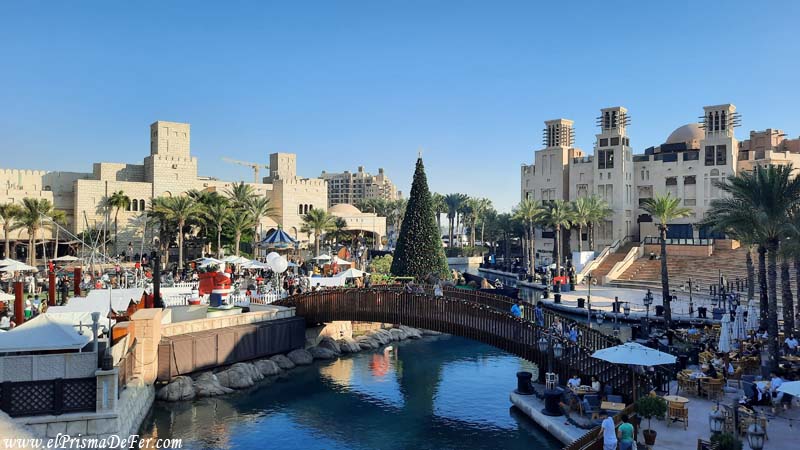
The shops are geared toward selling souvenirs and luxury goods, with prices that are anything but traditional.
Still, if you're interested in taking nice photos, taking a walk, or having a drink with a good view, it may be worth a visit.
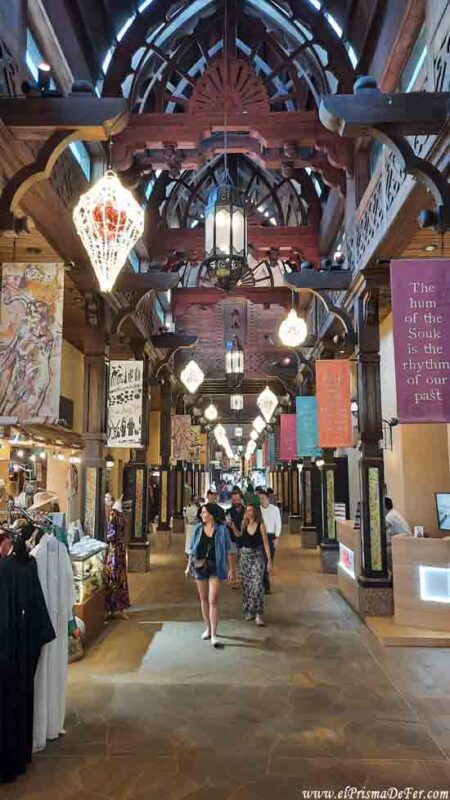
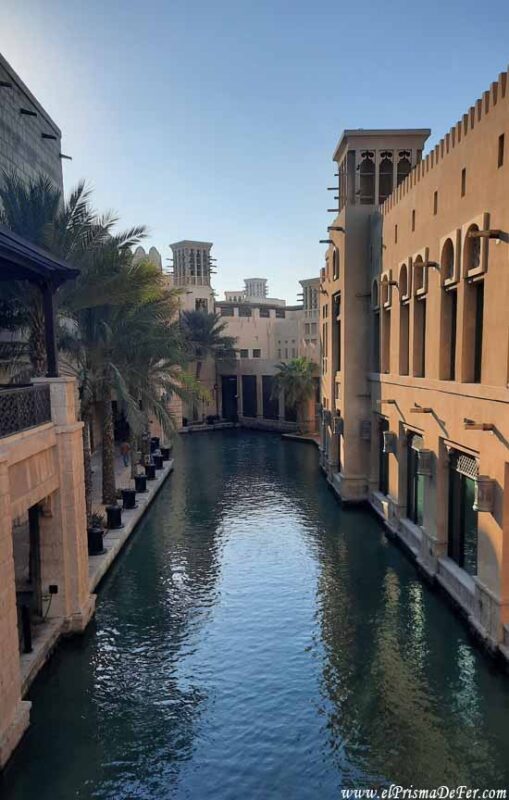
At night, everything lights up with a rather photogenic, dim lighting. But if you're looking for a market with a local, authentic soul, this isn't the place.
🌴 Exploring Palm Jumeirah on foot (and by monorail)
One of the most iconic places in Dubai is, without a doubt, Palm Jumeirah, that artificial palm-shaped island that we have seen so many times in photos.
You can travel by monorail, and I really recommend it because it offers great elevated views and is a comfortable way to get around the area.
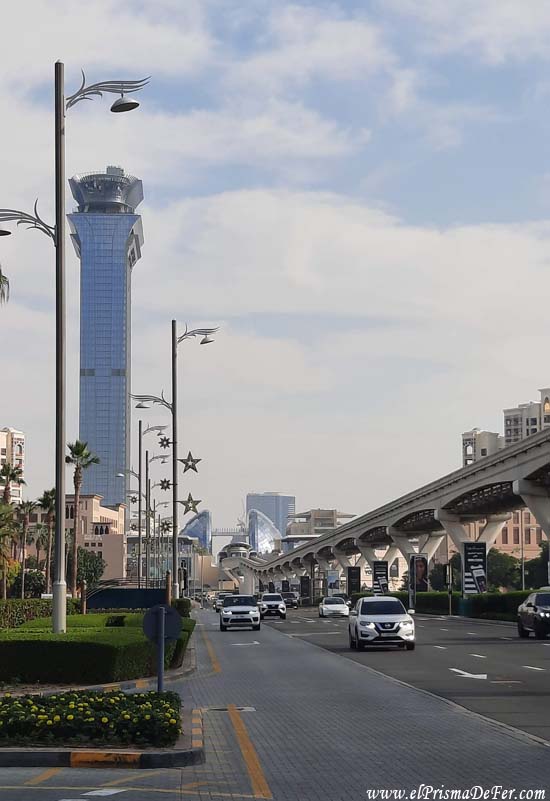
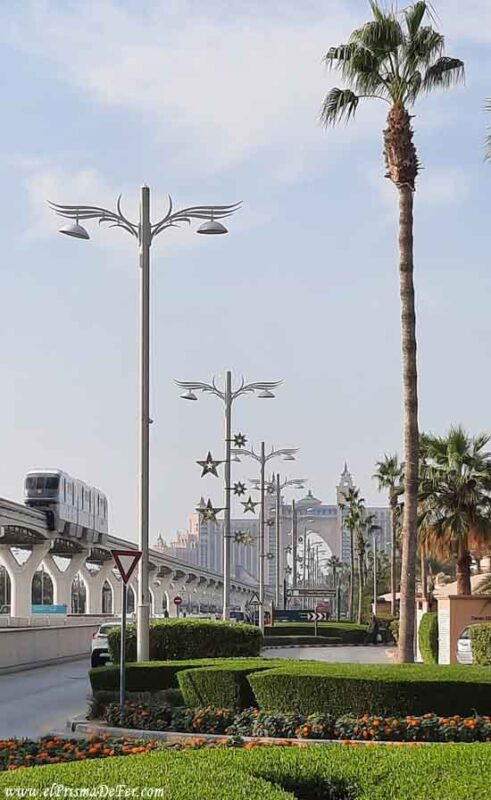
But in my case, true to my style, I also decided to walk it from end to end to see what I could find on my own.
The reality is that there isn't much for pedestrians. Palm Jumeirah is, in essence, a luxury gated community, designed for cars, not strolling. Only in a few areas was I able to get close to the palm tree's "fronds," where the luxury mansions and villas are located.
It's all impeccable, yes, but also very private. And while seeing the yachts, high-end cars, and million-dollar architecture can be impressive, it also conveys that feeling of exclusivity that reminds you that you are walking through a space designed for a different type of visitor.
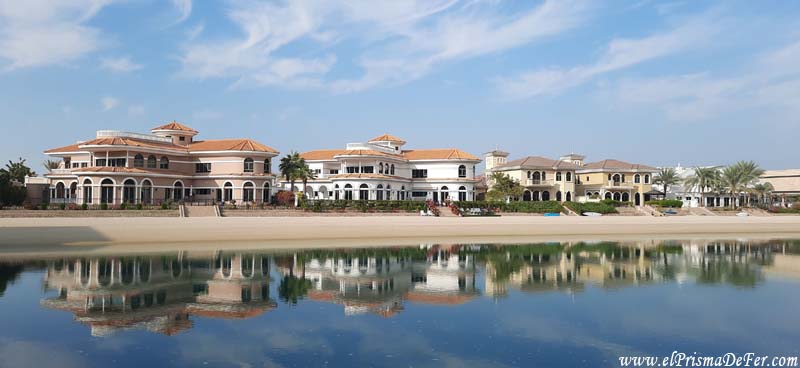
What I did find interesting was getting to the end of the palm tree, where there is a small public beach from which you can see impressive buildings, such as the Atlantis The Royal Hotel (different from the classic Atlantis, and even more modern) or that futuristic cubic building that looks like it came straight out of a movie. From there, the scale of what they built in the sea is truly appreciated.
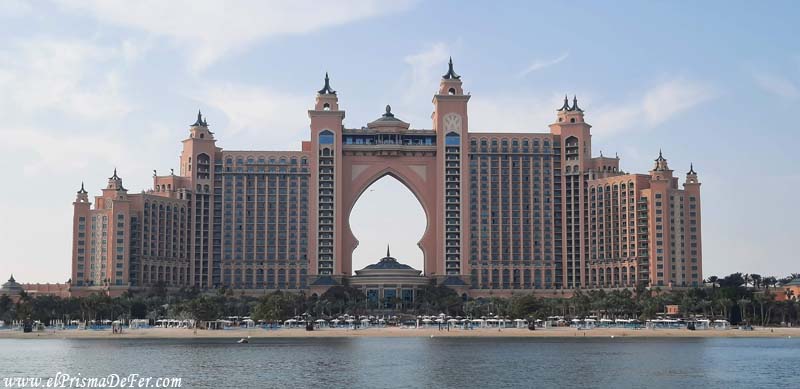
There's also another recommended area: Palm West Beach, right at the entrance to Palm Jumeirah. Although it's supposedly a private beach associated with the hotels, you can walk along the coastal promenade and see one of the best sunsets overlooking Dubai Marina.
The contrast between the sea, the setting sun, and the skyscrapers is spectacular.
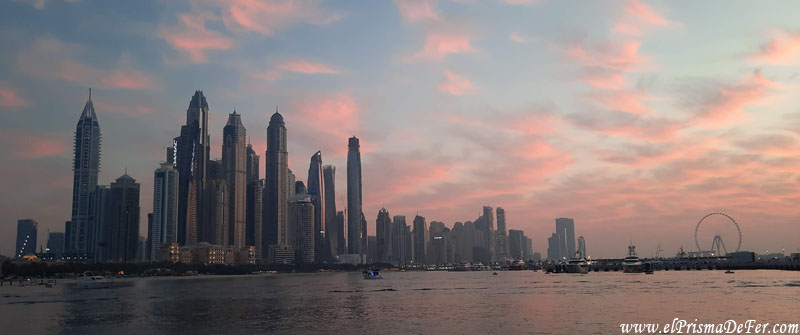
- Monorail Price: From AED 20 per ride
- Final stop: The View / Atlantis
🌅 Enjoy the sunset at The View at The Palm
A new observation deck on the artificial island of Palm Jumeirah with unique views of the Persian Gulf and the skyline. It's a great (and cheaper) alternative to the Burj Khalifa.
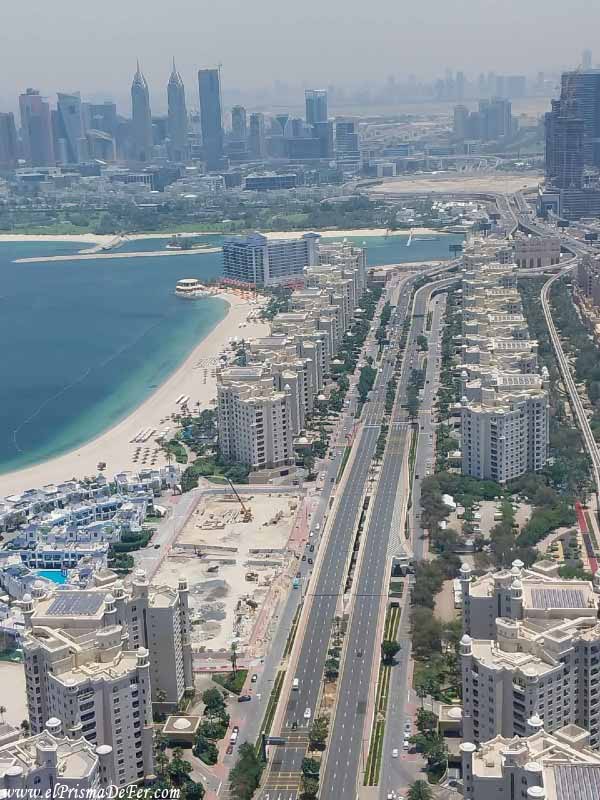
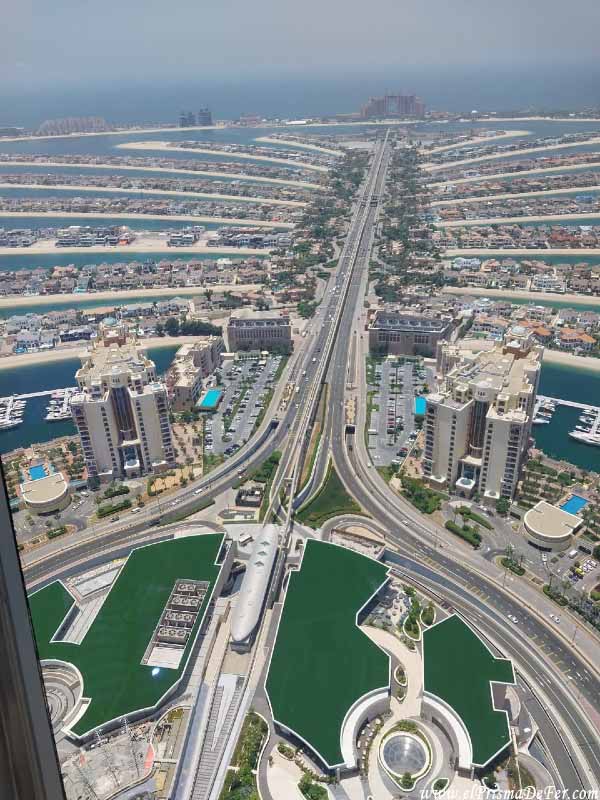
- Entry from: 110 AED (~27 USD)
- Official site: https://www.theviewpalm.ae
🧱 Visit Dubai's "traditional neighborhood" (Al Seef or Al Fahidi)
Although it's promoted as a historic spot, it actually looks like a newly built model. Faux adobe streets, souvenir shops, and expensive cafes. If you're short on time, you can skip it.
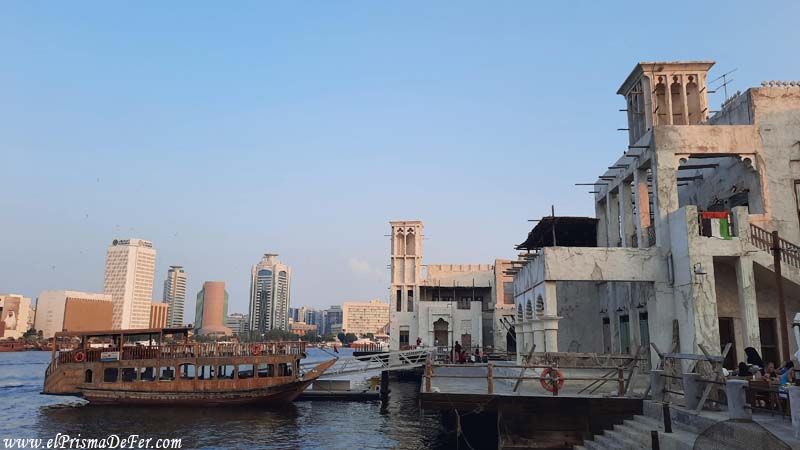
🕌 Visit the Jumeirah Mosque
One of the few mosques open to non-Muslims. You can take a guided tour to learn more about Islam and Arabic architecture.
- Guided tours: at 10:00 a.m. (except Fridays)
- Appropriate attire required
🖼️ Approach the Dubai Frame (or not)
This large golden frame in the middle of the city is meant to be a symbol, but seen from below, it's not impressive. From a drone, the idea is appreciated, but in person, it doesn't say much.
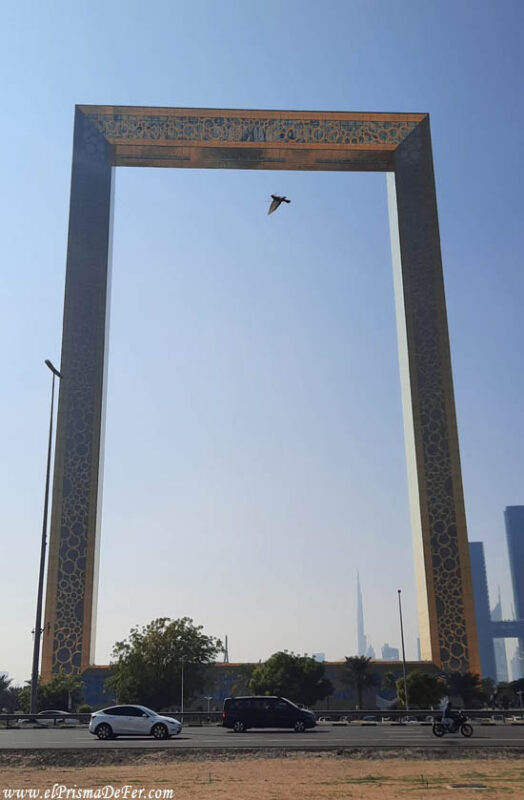
But if you decide to enter its panoramic viewpoint, located at the top, you have views of the futuristic skyline on one side and the old town on the other, all connected by a glass floor that offers a different perspective of the city.
My recommendation is, if you're short on time and don't intend to enter the viewpoint, it's not worth the effort.
💡 Dubai Festival City Mall (only if you have time to spare)
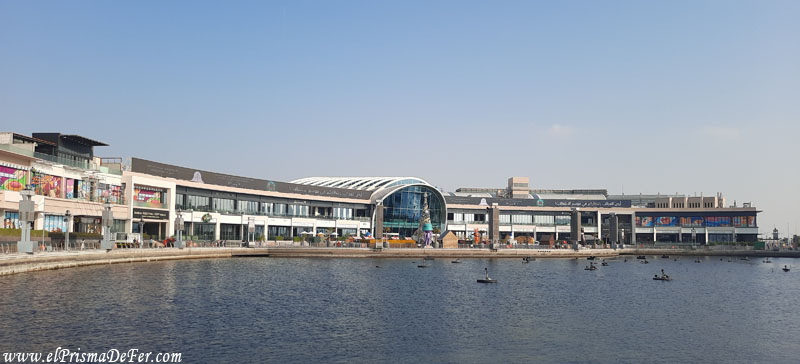
This mall offers a nightly show featuring fountains, lights, and projections. It's free, but I personally enjoyed the show in front of the Burj Khalifa much more.
It's a must-visit if you have time to spare and want to explore other parts of the city. The sunset from the mall's terrace or from outside overlooking the water is beautiful.
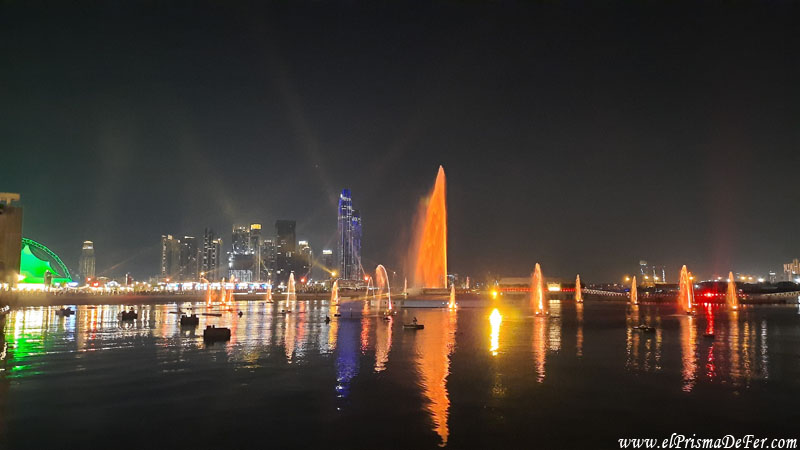
🕌 Ibn Battuta Mall: a shopping mall inspired by the travels of a great explorer
Among the most unusual malls in Dubai is the Ibn Battuta Mall, a shopping center that does not stand out so much for its size or extreme luxury (although it is quite large), but for its unique theme: it is inspired by the travels of the legendary Moroccan explorer Ibn Battuta, who traveled through much of the Islamic world in the 14th century.
The mall is divided into six themed zones, each decorated in the style of a region that Ibn Battuta visited: Andalusia, Tunisia, Egypt, Persia, India and China.
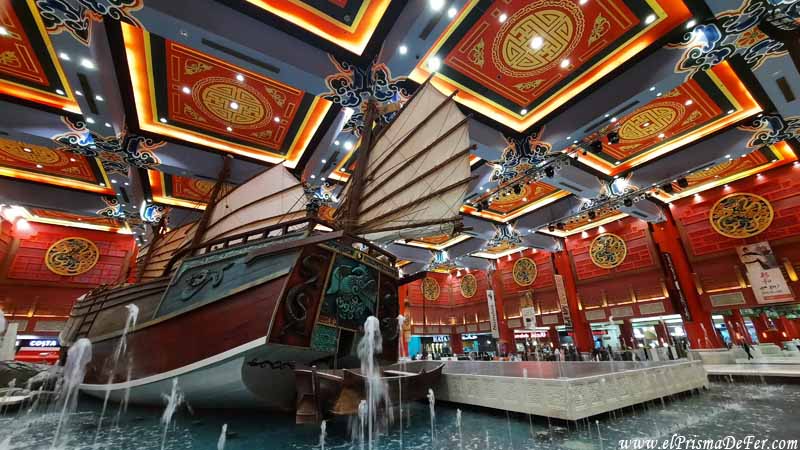
Walking through its halls is like taking a mini cultural tour of those countries, with decorated ceilings, fountains, carved columns, ornate doors, and even a giant mechanical elephant in the Indian section.
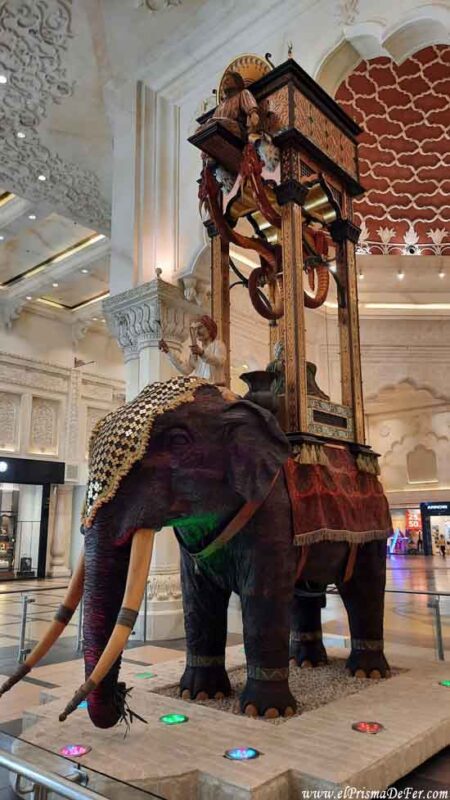
Beyond the decor, the mall has all the typical stores one would expect to find in Dubai: from international brands to places to grab a quick bite or sit down for a coffee.
It also has a cinema, supermarket, and recreational areas, but what really sets it apart is its visual design and concept.
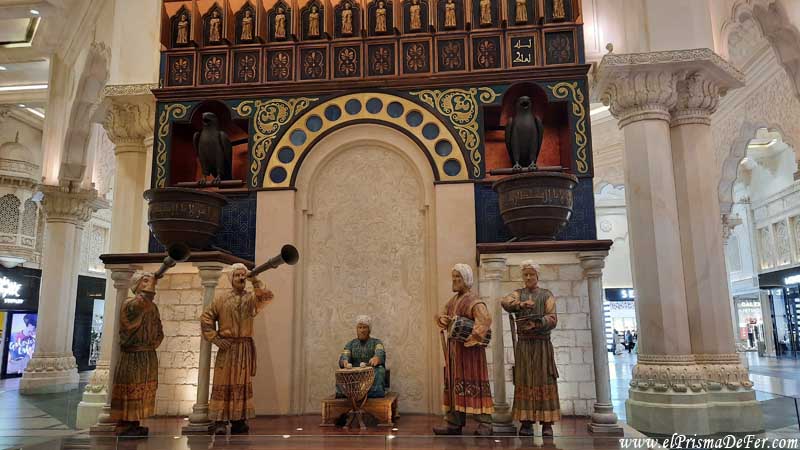
It's an ideal place to visit if you want to combine shopping with something different, without the tourist hustle and bustle of the Dubai Mall. It's also connected to the red metro line, making it easy to visit even if you're not staying nearby.
Yacht tour in Dubai
One of the most popular experiences in Dubai is to take a yacht tour around the Marina or Palm Jumeirah. Although I haven't personally done it, I've seen many tourists do, especially if they go in a group, with family or friends.
Tours typically include drinks, food, and music on board, with varying durations depending on budget. By Dubai standards, the prices are quite reasonable.
🚤 Sailing on an abra through Dubai Creek
In Dubai's Old Town (Deira and Bur Dubai), taking a traditional abra (wooden boat) costs just AED 1. It allows you to cross the canal and explore the gold, spice, and perfume souks.
🌸 Dubai Miracle Garden: flowers, colors, and lots of Instagram
The Dubai Miracle Garden is one of those places that surprises with its contrast: in the middle of the desert, a gigantic garden blooms with more than 150 million flowers arranged in striking shapes such as hearts, castles, airplanes, and giant characters. Everything is designed to fill your Instagram with colorful photos.
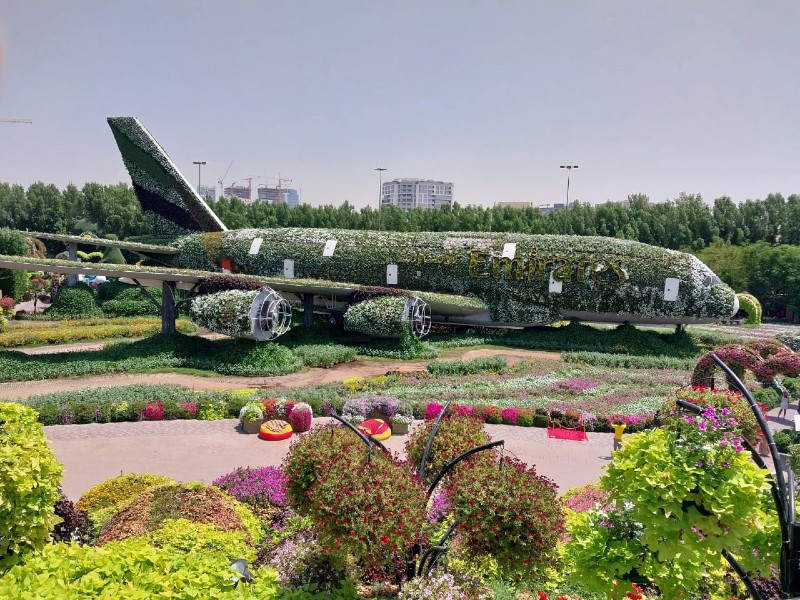
The place is only open during the winter season (approx. from November to April, since the heat the rest of the year is unbearable for the flowers).
Admission costs around 95 AED (about 25/30 USD) for adults, although it is advisable to check the official website to confirm updated prices and hours.
If you want to visit the Miracle Garden on your own, a good option is to purchase the ticket with transfer included from Dubai.
This way you can easily coordinate your schedule, spend a few hours exploring the garden, and then return without any hassle.
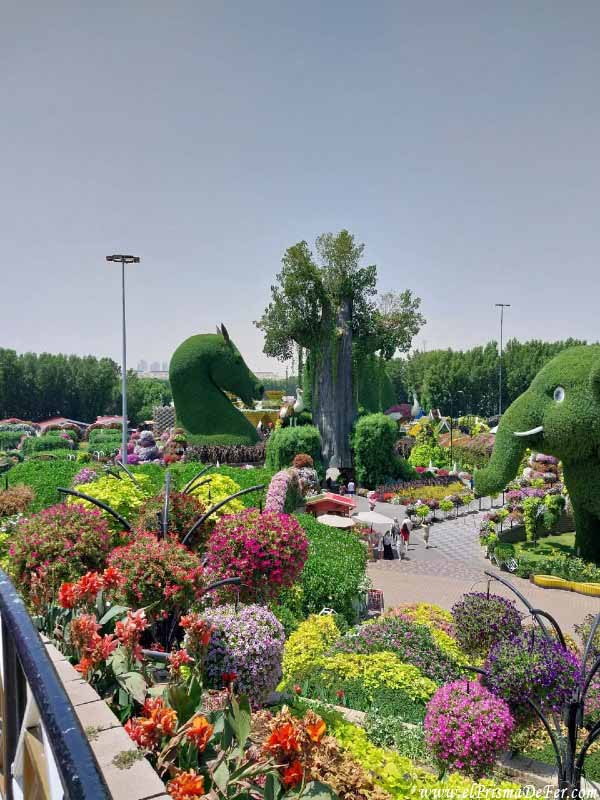
🏜️ Go on a desert safari
A very popular excursion from Dubai is a 4×4 desert tour, crossing the dunes, with sandboarding, dinner at a Bedouin camp, and traditional shows. There are options for all budgets.
I didn't do it because, just a few weeks earlier, I had been to Merzouga, Morocco, and had already had a similar experience in the dunes of the Sahara.
But if you want to experience the desert, it might be a good idea, since it's not very expensive.
- Approximate price: from 150 AED (~40 USD)
- Duration: Half day or full day.
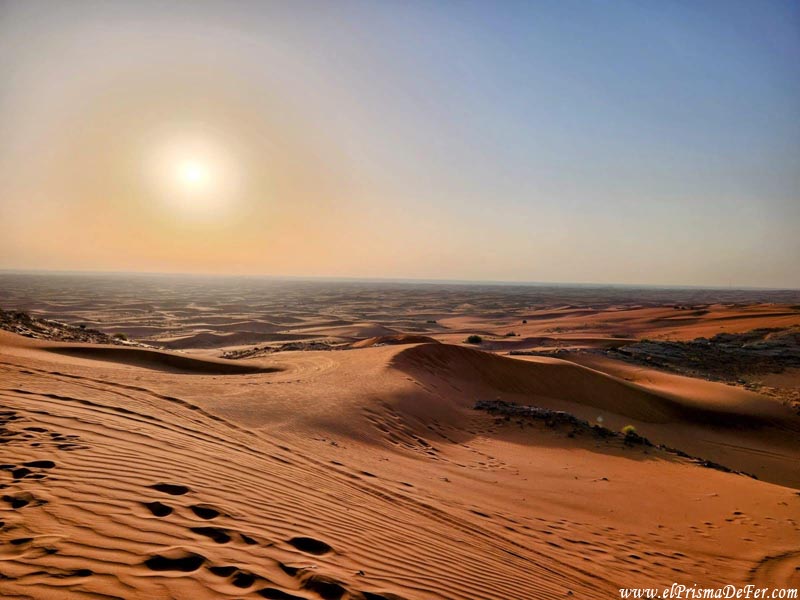
Organized activities in Dubai

🏨 Where to stay in Dubai (depending on your travel style)
Being such a spread-out city, there are several areas where it may be convenient for you to stay.
🏙️ Downtown Dubai (Burj Khalifa and Dubai Mall)
The most central and modern area. Ideal if you want to be close to the main attractions. It's a strategic location, with easy access to the metro and plenty of action, but it can be quite expensive.
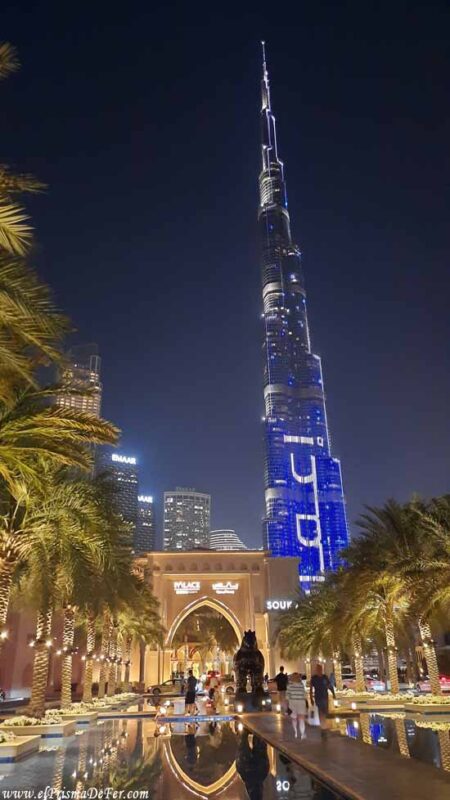
🏖️ Dubai Marina / JBR
My favorite area, modern, with a beach, nightlife, and a great atmosphere. Very popular with young travelers and digital nomads. You're close to the sea, with walking areas, and also with access to the metro. Although it's further from the airport, it's worth making this part of Dubai your base.
I stayed in two or three different accommodations in this area, taking advantage of some temporary offers. While I don't find them more available on Booking.com, these two are similar in terms of cost and location: Best view homes and Ora Place JBR
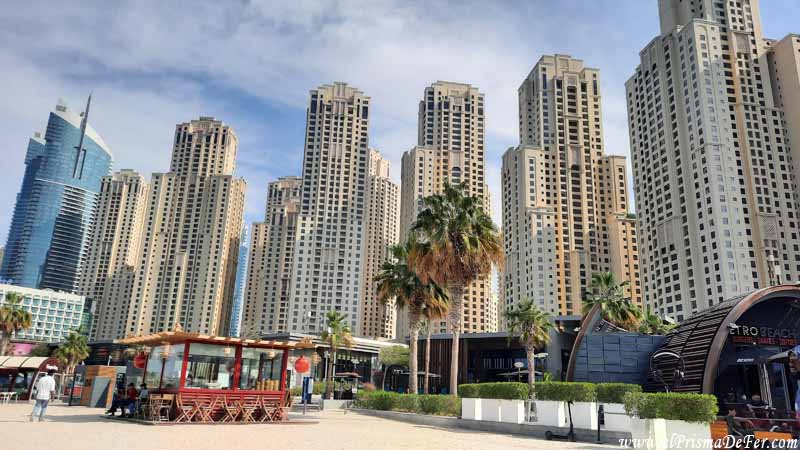
🕌 Deira / Bur Dubai (old area)
More chaotic, more local, and cheaper. If you're looking for budget accommodation, this is a good option, but it doesn't have the glamour of other parts of Dubai. If you really need to save money on your stay, this is the area for you, but be careful with the quality of the accommodations.
The one I stayed at the first few days is no longer on Booking.com, but this one could be similar due to its low price: Classic Capsule Holiday Homes
🏨 Al Barsha (near the Mall of the Emirates)
Intermediate zone: more accessible than Downtown, but well connected. It can have intermediate prices, is less touristy, and doesn't have as many nearby attractions.
📝 Practical advice
If your stay is short, prioritize being close to a metro station. Dubai may look easy on the map, but getting between areas takes time.
🧳 Final thoughts on my visit to Dubai: between wonder, artifice and contradiction
Traveling to Dubai was, for me, an experience full of contrasts. I had high expectations for getting to know it, not only because of the Burj Khalifa or its extreme luxuries, but also because of everything I had seen in documentaries and on social media about life in the Emirates.
And yes, Dubai impresses: it overwhelms you with its architecture, its city-like shopping malls, its impeccable beaches, and its neighborhoods like Marina or Downtown that look like something out of a futuristic movie.
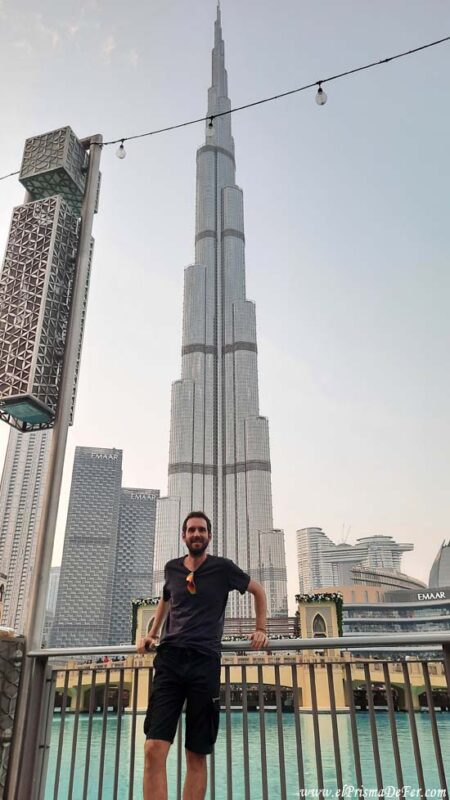
But there is also a more uncomfortable and less visible side, which was the one I felt the first few days: a gigantic city, made for cars, where walking is uncomfortable and unusual. Soulless spaces, surrounded by highways, where one feels more like a spectator than part of the city.
My first experience was difficult, staying in unfriendly areas, with accommodations designed more for migrant workers than travelers. Everything seemed artificial, staged like a perfect scene… but lifeless.
Added to this was the omnipresent image of the emir on murals and posters, depicted as if he were a divine or messianic figure. This is the construction of an official narrative that leaves no room for other voices, as if everything were perfect , even though there are many invisible realities beneath.
Over time, as I moved to areas like the Marina and the Burj Khalifa area, Dubai showed me its most attractive side: modern, clean, walkable, with pleasant beaches and a well-maintained urban design. I really liked those areas.
They left me with a more positive feeling. But I can't deny that this duality, between the fascinating spectacle and the empty set, was a constant throughout the trip.
Dubai isn't an easy city to understand. It's unique, yes, but it's also complex. It dazzles you and makes you uncomfortable.
Video of the main attractions of Dubai
Support The Prism of Fer!
Your support helps me continue creating free content on the blog. Thank you so much!


